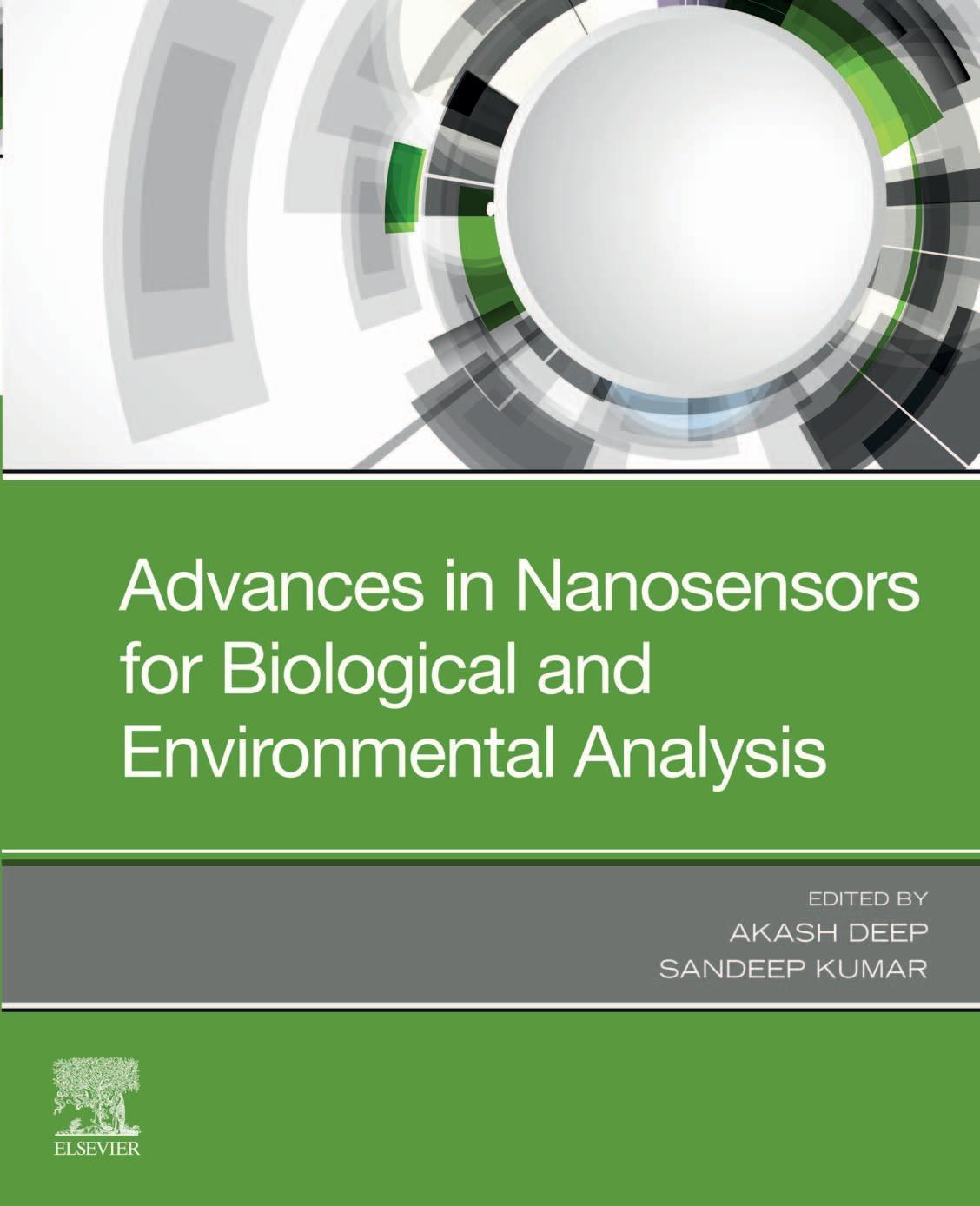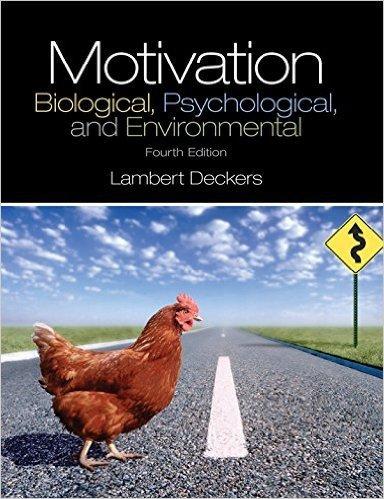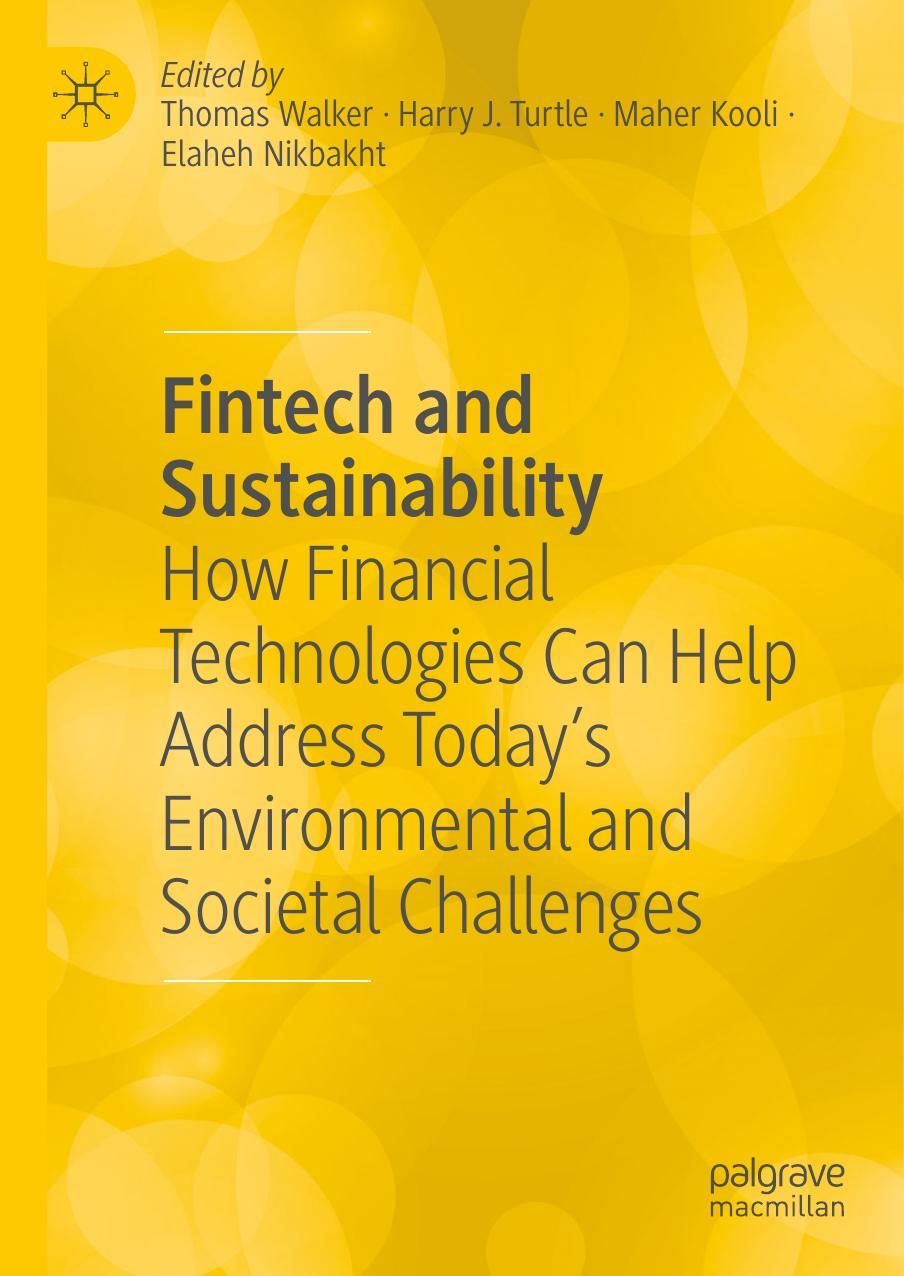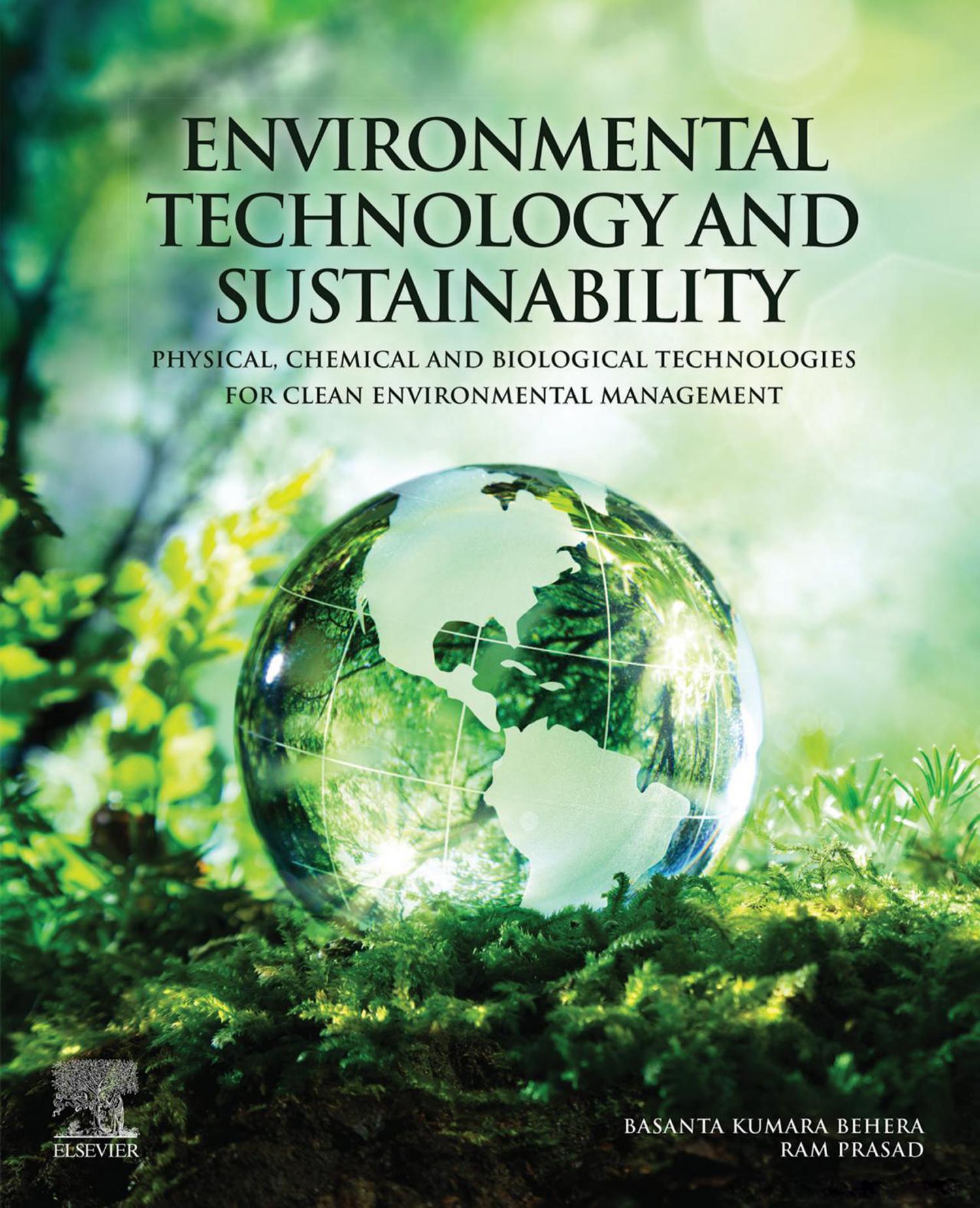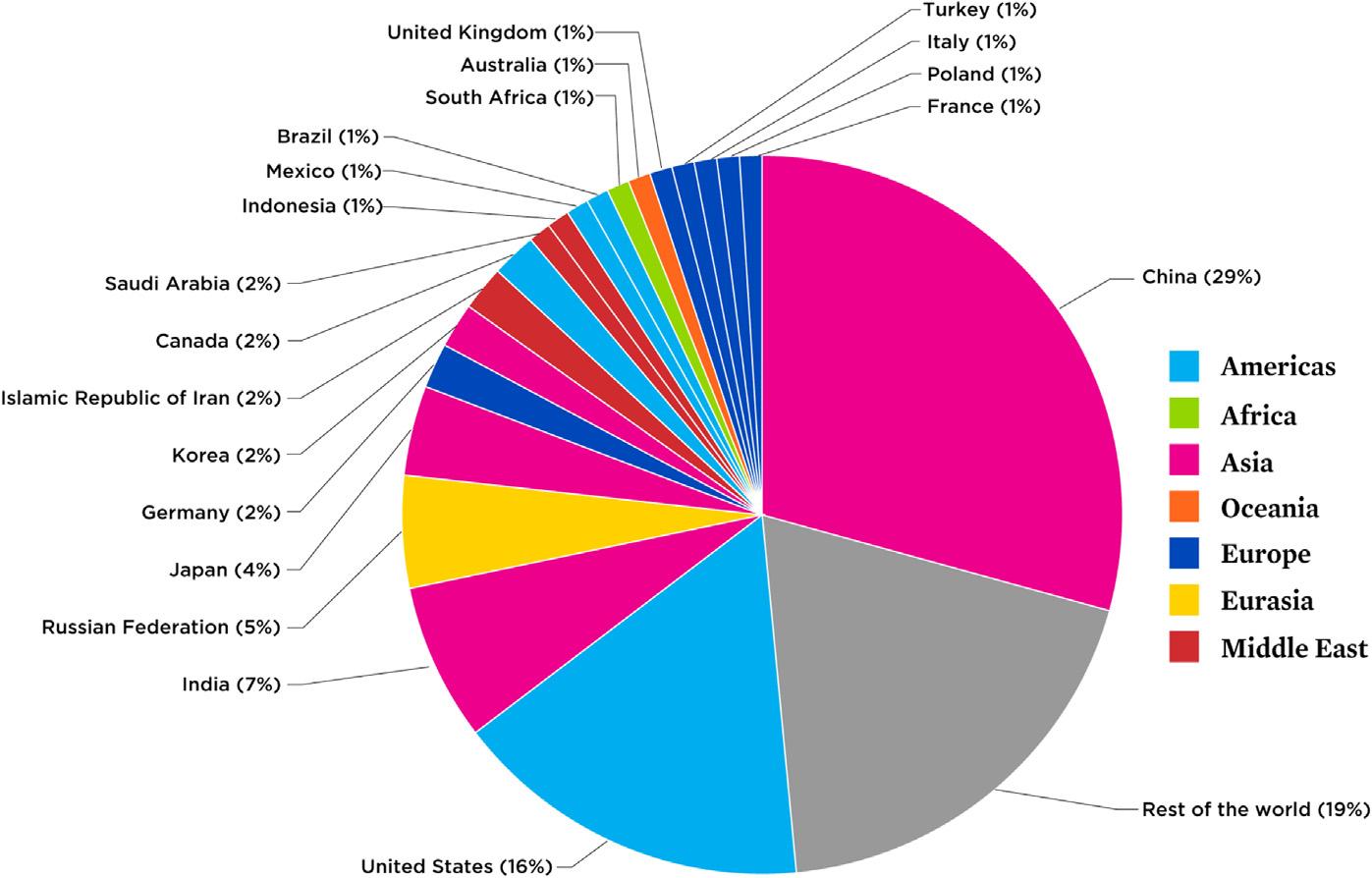https://ebookmass.com/product/environmental-technology-and-
Instant digital products (PDF, ePub, MOBI) ready for you
Download now and discover formats that fit your needs...
Advances in Nanosensors for Biological and Environmental Analysis Aakash Deep
https://ebookmass.com/product/advances-in-nanosensors-for-biologicaland-environmental-analysis-aakash-deep/
ebookmass.com
eTextbook 978-0205941001 Motivation: Biological, Psychological, and Environmental
https://ebookmass.com/product/etextbook-978-0205941001-motivationbiological-psychological-and-environmental/
ebookmass.com
Fintech and Sustainability: How Financial Technologies Can Help Address Today’s Environmental and Societal Challenges
Thomas Walker
https://ebookmass.com/product/fintech-and-sustainability-howfinancial-technologies-can-help-address-todays-environmental-andsocietal-challenges-thomas-walker/ ebookmass.com
This Book Will Motivate You: 100 Ways to
Steve Chandler
https://ebookmass.com/product/this-book-will-motivate-you-100-ways-tokick-start-your-life-goals-steve-chandler/
ebookmass.com
Hard Count: A F*** on the Football Field (Redemption Story) Ariana St. Claire
https://ebookmass.com/product/hard-count-a-f-on-the-football-fieldredemption-story-ariana-st-claire/
ebookmass.com
The Bent Zealots MC Box Set #4 MM BDSM (Books 1-8) Layla Wolfe
https://ebookmass.com/product/the-bent-zealots-mc-box-set-4-mm-bdsmbooks-1-8-layla-wolfe/
ebookmass.com
The Wrong Good Deed Caroline B. Cooney
https://ebookmass.com/product/the-wrong-good-deed-caroline-b-cooney/
ebookmass.com
The Real Auschwitz Chronicle, Part 1: The History of the Auschwitz Camps Told by Authentic Wartime Documents Carlo Mattogno
https://ebookmass.com/product/the-real-auschwitz-chronicle-part-1-thehistory-of-the-auschwitz-camps-told-by-authentic-wartime-documentscarlo-mattogno/
ebookmass.com
The AI Revolution in Medicine: GPT-4 and Beyond Peter Lee
https://ebookmass.com/product/the-ai-revolution-in-medicine-gpt-4-andbeyond-peter-lee-3/
ebookmass.com
Beginning Git and GitHub: Version Control, Project Management and Teamwork for the New Developer, 2nd Edition Tsitoara
https://ebookmass.com/product/beginning-git-and-github-versioncontrol-project-management-and-teamwork-for-the-new-developer-2ndedition-tsitoara/
ebookmass.com
Physical,Chemical,and
BiologicalTechnologies forCleanEnvironmental Management
Physical,Chemical,and
BiologicalTechnologies forCleanEnvironmental Management
BasantaKumaraBehera AdvancedCenterforBiotechnology; MaharshiDayanandUniversity,Rohtak,Haryana,India, SanmarSpecialityChemicalLtd,India
DepartmentofBotanyMahatmaGandhiCentralUniversity, Motihari,Bihar,India
RamPrasad
Elsevier
Radarweg29,POBox211,1000AEAmsterdam,Netherlands
TheBoulevard,LangfordLane,Kidlington,OxfordOX51GB,UnitedKingdom 50HampshireStreet,5thFloor,Cambridge,MA02139,UnitedStates
Copyright©2020ElsevierInc.Allrightsreserved.
Nopartofthispublicationmaybereproducedortransmittedinanyformorbyanymeans,electronic ormechanical,includingphotocopying,recording,oranyinformationstorageandretrievalsystem, withoutpermissioninwritingfromthepublisher.Detailsonhowtoseekpermission,further informationaboutthePublisher’spermissionspoliciesandourarrangementswithorganizationssuch astheCopyrightClearanceCenterandtheCopyrightLicensingAgency,canbefoundatourwebsite: www.elsevier.com/permissions.
Thisbookandtheindividualcontributionscontainedinitareprotectedundercopyrightbythe Publisher(otherthanasmaybenotedherein).
Notices
Knowledgeandbestpracticeinthisfieldareconstantlychanging.Asnewresearchandexperience broadenourunderstanding,changesinresearchmethods,professionalpractices,ormedical treatmentmaybecomenecessary.
Practitionersandresearchersmustalwaysrelyontheirownexperienceandknowledgeinevaluating andusinganyinformation,methods,compounds,orexperimentsdescribedherein.Inusingsuch informationormethodstheyshouldbemindfuloftheirownsafetyandthesafetyofothers,including partiesforwhomtheyhaveaprofessionalresponsibility.
Tothefullestextentofthelaw,neitherthePublishernortheauthors,contributors,oreditors,assume anyliabilityforanyinjuryand/ordamagetopersonsorpropertyasamatterofproductsliability, negligenceorotherwise,orfromanyuseoroperationofanymethods,products,instructions,orideas containedinthematerialherein.
BritishLibraryCataloguing-in-PublicationData
AcataloguerecordforthisbookisavailablefromtheBritishLibrary LibraryofCongressCataloging-in-PublicationData
AcatalogrecordforthisbookisavailablefromtheLibraryofCongress ISBN:978-0-12-819103-3
ForInformationonallElsevierpublications visitourwebsiteat https://www.elsevier.com/books-and-journals
Publisher: SusanDennis
AcquisitionsEditor: KostasKIMarinakis
EditorialProjectManager: SaraValentino
ProductionProjectManager: BharatwajVaratharajan
CoverDesigner: VictoriaPearson
TypesetbyMPSLimited,Chennai,India
Contents
CHAPTER1Conceptualdevelopmentforacleanenvironment ...... 1 Abbreviation..................................................................................1
1.1 Introduction....................................................................................2
1.1.1FromtheRioEarthSummittoEarthDay.......................3
1.1.2EarthDay..........................................................................5
1.1.3Datageneration,compiling,andapplicationfor environmentalstudies.......................................................6
1.1.4Developingabindingframeworkofenvironmental principles.........................................................................11
1.1.5Globalclimatechangeregime........................................14
1.1.6Imposingliabilityforenvironmentaldamage................15
1.1.7Thelawsofenvironmentalliability...............................18
1.1.8Environmentalrestorationandremediation...................20
1.1.9Environmentalremediation.............................................23
1.1.10Environmentalmanagementandgreeneconomy..........35 References....................................................................................37
CHAPTER2Greenhousegascaptureandconversion .................. 41
2.1 Greenhousegasesandglobalwarming.......................................41
2.1.1History...............................................................................41
2.1.2Sourcesofgreenhousegases............................................43
2.1.3Carboncapture,utilization,andstorage...........................44
2.1.4Commercializationofcarboncapturingprocess..............52
2.1.5Greenhousegasseparation................................................55
2.1.6DifferentcycleforCO2 adsorption..................................62 References....................................................................................65
CHAPTER3Aqueous-phaseconservationandmanagement ........ 73
3.1 WatercoverageEarth’ssurface...................................................73
3.1.1Rivers,lakes,andbrackishsystems.................................73
3.1.2Marinesystems.................................................................74
3.1.3Waterqualitycontrol........................................................79
3.1.4Waterpollutioncontrolregulation...................................96
3.1.5Sustainableenergymanagementfromwaterbodies.........96
3.1.6Applicationsofmicrobialfuelcelltechnology..............119
3.1.7Hydrogenproduction......................................................123 v
CHAPTER4Strategiesforsoilmanagement
4.3.1Nanoremediationforcontaminatedsoil.........................158
5.1.2Thestratosphere..............................................................170
5.1.3Mesosphere......................................................................172
5.1.4Thethermosphere............................................................172
5.2.1Typesofairpollutants....................................................172
5.2.2Suspendedparticulatematter..........................................172
5.2.3Gaseouspollutants..........................................................173
5.2.4Secondarypollutants.......................................................177
5.2.5Odors...............................................................................177
5.3 Cleanairimplementation...........................................................180
5.3.1Particulatematter............................................................181
5.4 Regulationofairpollution.........................................................183
5.4.1EuropeanUnion............................................................183
5.4.2Australia........................................................................185
5.4.3Brazil.............................................................................185
5.4.4Canada...........................................................................186
5.4.5China.............................................................................187
5.4.6India...............................................................................188
5.4.7France............................................................................189
5.4.8UnitedStates.................................................................189
5.4.9Israel..............................................................................190
5.4.10Japan..............................................................................190
5.4.11SouthAfrica..................................................................191
5.4.12Switzerland....................................................................191
5.4.13TheUnitedKingdom....................................................192
5.5 Airpollutioncontrolmeasures..................................................192
5.5.1Controlofparticulates....................................................192
5.5.2Biologicaltreatmentofairpollution..............................195 References..................................................................................198
Conceptualdevelopmentfor acleanenvironment
ChapterOutline
Abbreviation...............................................................................................................
1.1.1FromtheRioEarthSummittoEarthDay............................................3
1.1.2EarthDay........................................................................................5
1.1.3Datageneration,compiling,andapplicationforenvironmental studies............................................................................................6
1.1.4Developingabindingframeworkofenvironmentalprinciples..............11
1.1.5Globalclimatechangeregime..........................................................14
1.1.6Imposingliabilityforenvironmentaldamage.....................................15
1.1.7Thelawsofenvironmentalliability...................................................18
1.1.8Environmentalrestorationandremediation.......................................20
1.1.9Environmentalremediation..............................................................23
1.1.10Environmentalmanagementandgreeneconomy...............................35
Abbreviation
ABS AccessandBenefit-sharing
BIEN BotanicalInformationNetworkandEcologyNetwork
GBIF GlobalBiodiversityInformationFaculty
CBD ConventiononBiologicalDiversity
COP ConferenceoftheParties
EI environmentinformation
EPA EnvironmentalProtectionAgency
EQI EnvironmentalQualityIndex
EEZ exclusiveeconomiczone
EU EuropeanUnion
FAO FoodandAgricultureOrganization
GBIF GlobalBiodiversityInformationFaculty
GGEI GlobalGreenEconomyIndex
IT informationtechnology
IOOS IntegratedOceanObservingSystem
IEL InternationalEnvironmentalLaw
ILC InternationalLawCommission EnvironmentalTechnologyandSustainability.DOI: https://doi.org/10.1016/B978-0-12-819103-3.00001-9
IAEA InternationalAtomicEnergyAgency
IMO InternationalMaritimeOrganization
ILO InternationalLaborOrganization
ISB insitubioremediation
ICC InternationalChamberofCommerce
LMO livingmodifiedorganism
LDN landdegradationneutrality
LIDAR lightdetectionandranging
LMIC lowandmiddleincome
MBI market-basedinstruments
NCDS NationalConsortiumforDataScience
NOAA NationalOceanicAtmosphericAdministration
NOS NationalOceanService
OSRTI OfficeofSuperfundRemediationandTechnologyInnovation
SDG SustainableDevelopmentGoal
SER SocietyforEcologicalRestoration
UNCED UnitedNationsConferenceonEnvironmentandDevelopment
UNEP UnitedNationsEnvironmentalProgram
UNCCD UnitedNationsConventiontoCombatDesertification
UNEP UnitedNationsEnvironmentProgram
UNFCCC UnitedNationsFrameworkConventiononClimateChange
UNESCO UnitedNationsEducation,ScientificandCultureOrganization
WCED WorldCommissiononEnvironmentalandDevelopment
WHO WorldHealthOrganization
1.1 Introduction
Overthepastfewdecades,protectingtheglobalenvironmenthasemergedasone ofthemajorchallengesininternationalrelations.Globalenvironmentaltreaties havebeenputtinggreateffortintopromotingcooperationbymeansofsystematic observations,research,andinformationexchangeontheeffectsofhumanactivitiesontheozonelayerandtoadoptlegislativeoradministrativemeasuresagainst activitieslikelytohaveadverseeffectsontheozonelayer.In-spiteofhundredof regionalandbilateralagreementstillthereisnosubstantialchangeinthedeclinationglobalenvironmentalproblem.Virtuallyeverymajorenvironmentalindicator isworsetodaythanitwasatthetimeofthe1992UnitedNationsConferenceon EnvironmentandDevelopment(UNCEDortheEarthSummit)heldinRiode Janeiro.Climatechangehascausedthewarmestdecadeinrecordedhistory,the ozonelayercontinuestodeteriorate,speciesextinctionisatitshighestsincethe endofthedinosaurera,fishpopulationsarecrashing,andtoxicchemicalsare accumulatingineverypartoftheplanetaswellasineverylivingorganism includinghumans.So,itisnecessarytogivelibertytointernationalinstitutions andnon-governmentorganisationstoexpresscitizen’srighttoinformation,participationandindependentreviewonalarmingconditionofenvironmentaroundthe
world.Unfortunately,noprotocolandstandardproceduresareavailabletouseat governmentleveltoimplementresolutionsforinternationalbodiesfortheprotectionofEarthfromnotoriousgreenhousegasesresponsibleforthedepletionofthe ozonelayer,andprotectivemajorsformonitoringtheglobalclimaticchangesscenario.Inaddition,specialemphasisshouldbeplacedonshort-termenergysecurityandlong-termenergyconservationprocessesinasustainablepattern.Itis alsonecessarythateachandeverynationshouldhonorthedecisionsofinternationalbodies,aimingforacleanenvironmentforabetterlife.
1.1.1 FromtheRioEarthSummittoEarthDay
InJune1992,forthefirsttimeinworldhistory,500headsofstatemetinRiode Janeiro,BrazilforaninternationalEarthsummit,the“UnitedNationsConference onEnvironmentandDevelopment(UNCED).”Italsocarriestheinformalname, “EarthSummit.”TheconferencetookplacefromJune3toJune14.Themain motivationofthesummitwastoprotecttheenvironmentandtherelationship betweeneconomics,science,andtheenvironmentbasedontheprevailingpoliticalscenarioatthegloballevelonaprioritybasis.
1.1.1.1 Conceptualdevelopmentofsummit
In1968,theUnitedNations(UN)GeneralAssemblycalledforaninternational conferencetounderstand“problemofthehumanenvironmentandalsotoidentify thoseaspectsofitthatcanonly,orbestbesolvedthroughinternationalcooperationandagreement.”TheoriginalproposalwasinitiatedbySweden [1].In between1970to1972,theCanadianforeignaidagencyhadorganizedfourinternationalconferencestofocusvariousissuesonenvironmentalproblemsincollaborationwithdevelopingcountries.
Thefirstinitiationindevelopingawarenessaboutenvironmentaldeterioration washeldin1972,Stockholm,Sweden.Thisfirstinitiation,theUnitedNations ConferenceontheHumanEnvironment,wasorganizedtoraiseawarenessand alsototakenecessarystepsformonitoringtheenvironmentchangescauseddue tounusualhumanactivities.Thissummitwasattendedby114delegatesand2 headsofstate(OlafPalmeofSwedenandIndiraGandhiofIndia).The Stockholmconferencesecuredapermanentplacefortheenvironmentonthe world’sagendaandledtotheestablishmentoftheUnitedNationsEnvironment Program(UNEP).Thisworldconferencewasfollowedbymanyinternational meetingswhichincludethe1978GreatLakesWaterQualityAgreement,the 1979GenevaConventiononLong-rangeTransboundaryAirPollution,the1985 HelsinkiAgreement,andthe1988MontrealProtocolonTransboundary MovementofHazardousWastes.Beinginspiredbytheseinternationalconferences,in1992,theRioConferencewasinitiatedonagloballevelwithawider rangeofnations.
In1983,undertheleadershipofNorwegianPrimeMinisterfromHarlem,the UNGeneralAssemblysetuptheWorldCommissiononEnvironment
Development(knownastheBrundtlandCommission)tolinkenvironmental issuestothefindingsofthe1980BrandtreportonNorth Southrelations.Butit tookabout7years(1987)forthepublicationofthereport.Thereportwasmainly basedontheenvironmentandeconomyinordertobringaboutsustainabilityin development [2].
TheEarthSummitinRiodeJaneirowasexceptionallyuniqueduetothemarvelousgatheringofthousandsofrepresentativesfromallaroundtheglobe.This conferencepersuadedallstatelevelstorethinkenvironmentalprotectionandeconomicdevelopmentandfindwaystohaltthedeformationofglobalecosystems andthepollutionoftheplanet.Itwasahugegatheringofabout30,000delegates includingmediapeopleandtherepresentativesof178nations.Themaintargetof thisconferencewastobringsustainabilityinenvironmentalmanagementprocess development [3]
TheconcludingsessionoftheEarthSummitresultedinthreemajoraction agendas:
1. TheRioDeclarationonEnvironmentandDevelopment: TheRioDeclarationhad27majoractionstoguidecountriesinfuture sustainabledevelopment.Itwassignedbyover170countries [4].
2. Agenda21:
The“21”inAgenda21referstothe21stcentury.Agenda21isa nonbindingactionplanoftheUNtobringsustainabilityintoenvironmental developmentprojects [5,6].Theagendamainlyincludesinitiatingthevarious aspectsofAgenda21atlocalstategovernmentlevelthroughtheirrespective localagendasonvariousissuesrelatedtoenvironmentconservationand sustainability.
3. ForestPrinciples:
TheForestPrinciples(RioForestPrinciples)aremainlyconcernedwith “Non-LegallyBindingAuthoritativeStatementofPrinciplesforaGlobal ConsensusontheManagement,Conservation,andSustainableDevelopment ofAllTypesofForest(1992).”Thisinformaldocumentwasproducedat UNCED.
IntheEarthSummit(1992),therewereseverallegallybindingagreements openforsignature.
1.1.1.1.1 ConventiononBiologicalDiversity
TheConventiononBiologicalDiversity(CBD)isamultilateraltreatyhaving threemajorgoalsincluding(1)theconservationofbiologicaldiversity(biodiversity),(2)thesustainableuseofitscomponents,and(3)theequitablesharingof benefitsarisingfromgeneticresources.
Inbrief,thebasicobjectiveistoframepoliciesatgovernmentlevelonstrategiesfortheconservationandsustainableuseofbiologicaldiversity.TheconventionwasopenedforsignatureattheEarthSummitinRiodeJaneiroonJune5, 1992,andwasimplementedonDecember29,1993.TheCBDhastwo
supplementaryagreements.(1)TheCartagenaProtocolonBiosafetytothe ConventiononBiologicalDiversity.Itisoninternationaltreatygoverningthe movementsoflivingmodifiedorganisms(LMOs)duetotransferofbiotechnologyfromonecountrytoanother.In1993,itwasintroducedasasupplementary agreementtotheCBDonJanuary29th,andwasimplementedonSeptember 11th.(2)TheNagoyaProtocolonAccesstoGeneticResourcesandFairand EquitableSharingofBenefitsArisingfromtheirUtilization(ABS).TheNagoya ProtocolonABSwasadaptedonOctober29,2010,inNagoya,Japan,and enteredintouseonOctober12,2014.Itisaimedatthefairandequitablesharing ofbenefitsarisingfromtheutilizationofgeneticresources.
1.1.1.2 FrameworkConventiononClimateChanges
Theinternationalenvironmentaltreatyonclimaticchangeswasadaptedbythe UnitedNationsFrameworkConventiononClimateChange(UNFCCC)onMay 9,1992andwasintroducedattheEarthSummitinRiodeJaneiroforsignature. ItthenenteredintouseonMarch21,1994,aftertherectificationbymanyparticipatingcounties.Itsmainaimwastobringstabilitytogreenhousegasemissions topreventhazardousanthropogenicinterferencewiththeclimaticsystem [7].
1.1.1.2.1 UnitedNationsConventiontoCombatDesertification In1994,theUnitedNationsConventiontoCombatDesertification(UNCCD) madeaninternationalagreementlinkingtheenvironmentanddevelopmenttosustainablelandmanagement.Itwasmainlytargetedatarid,semi-arid,anddrysubhumidareastobringaboutamendmenttostopdesertificationordetritions.The UNCCDframeworkistoachievelanddegradationneutrality(LDN)inorderto restoreproductivitytothehugeamountofdegradedlandatagloballevelby 2030.
1.1.2
EarthDay
In1968,MortonHilbertandtheUSPublicHealthServiceorganizedtheHuman EcologySymposiumwiththebasicthemefocusingonenvironmentdegradation. Hearingfromscientists,thestudentcommunitygotinspiredtofindwaysand meansofspreadingawarenessaboutenvironmentdegradation [8].Inreality,this wasthebeginningofEarthDay.Fortwosubsequentyears,Hilbertandstudents weredeeplyinvolvedinplanningstrategiesforthefirstEarthDay [9] Meanwhile,in1969,peaceactivistJohnMcConnellproposedadaytohonorthe EarthinordertoacquireglobalpeaceattheUNEducation,Scientific,and CultureOrganization(UNESCO)ConferenceinSanFrancisco.Hisdesirewasto celebratethisoccasiononMarch21,1970,theonsetofspringinthenorthern hemisphere.ThiswaslatersanctionedbySecretaryGeneralUThantoftheUN. AmonthlaterSenatorGaylordNelsonfromWisconsinproposedforEarthDay, afterwitnessingahazardousandmassiveoilspillinSantaBarbara,California [10].Inthesameyear,onNovember15,theVietnamMoratoriumCommittee
stagedahugeprotestagainsttheVietnamWar.ThiswasattendedbyhalfamillionpeopleinpeacefuldemonstrationinWashington.Inordertodivertthestudents’mindsSenatorNelsonannouncedtheideafora“nationalteach-inon environment”tothenationalmediaandpublic.OnApril22,1970,about20millionAmericansraisedtheirvoicesagainstthedeteriorationofenvironmentalqualityduetooilspills,theinfluxofindustrialeffluentsintothevariousecosystems, rawsewage,toxicdumps,pesticides,theemissionofgreenhousegases,andthe extinctionofbiodiversity.Thisagitationreceivedsupportfromeverycornerof thenation.
Sincethen,April22isadaytopromoteandbringenvironmentawarenessfor theconservationoftheplanet.Itiscelebratedinmorethan193countrieseach year,andiscoordinatedbythenonprofitEarthDayNetwork,chairedbythefirst EarthDay(1970)organizerDenisHayes.Itisthelargestsecularholidayinthe world,andiscelebratedbymorethanabillionpeopleeveryyear,inanattempt tomakegovernmentsawareofallthestatstoframeandtoimplementeffective policiesforglobalenvironmentsafetyandsecurity [11,12].
2017alsowitnessedtheEarthDaycelebrationwiththeMarchforScience rallyattheNationalMallinWashington,DC.In2019,ahugecampaignwas organizedjointlybyEarthNetworkandKeepAmericaBeautifulasNational CleanupDayfortheinauguralnationwideEarthDaycleanup.Thiscampaignwas heldinall50Stateswithmorethan500,000volunteers [13].
1.1.3 Datageneration,compiling,andapplicationfor environmentalstudies
Bothinanimateandanimatesystemsarebeingmanagedforsustainabilityonthe basisofdatacompilingandassessmentprocessesbasedontheirgeographical location,physicochemicalcharacters,climaticchanges,andoverallinteraction withhumanactivities.Humanactivitiesincludeindustrialization,urbanization, ruralstructureandfunction,andsocioeconomicconditions.Ourpresentwayof lifeismainlyregulatedbythedata-drivenage.Thestructureandfunctionoflife ismainlydependentonthesurroundingenvironment.Thuscumulativedataon environmentalsciencecanbeintegratedandcorrelatedwiththestructureand functionoflife.Informationtechnology(IT)isusedasadatacompilingtoolfor surveyingenvironmentinformationonecosystems,biodiversity,resourceconservation,climaticchanges,healthhazardousfactors,healthcare,toxicological aspects,wastestypesandgenerationsources,nonconventionalenergy,etc.These datacanbehelpfulinresearchanddevelopment,regulatoryprocesses,framingof policy,andenvironmentmanagement(Table1.1).
1.1.3.1 Fillingtheenvironmentalpolicygaps
OneofthebestexamplesofadatabaseinformationsystemistheUS EnvironmentalProtectionAgency(USEPA).TheUSEPAisanindependent
Table1.1 Natureofdataminingforfillinggapsofvariousaspectsof environmentalrestorationanddevelopment.
NatureofdataminingImplementation
Fillingtheenvironmentalpolicy gaps
Fillingthegapinimprovingair qualitydevelopment
Fillingthegapstomonitor marinepollution
Environmentalprotection,research,conservation, monitoring,bringsustainability
Tocoverwidespectrumofairqualityanalysisbyusing satelliteandground-levelmonitoringwaysandmeans, andprovidetechnicalinformationinfindingoutsolution forairqualityimprovement.
Restorationofmarineecosystemfromclimaticchanges andunusualhumanactivity
Developingintegratednetworkprogramfordata collection,sothatdatacanbeusedtogetherandmore accessibletousers
Fillingthegaps restorationof biodiversity
Biodiversitydataaredisplayedonpublicdomainsothat scientistsandpubliccanhaveoverallinformationon taxonomy,geographicaldistribution,andstructureand functionoforganisms
bodyoftheUnitedStatesfederalgovernmentforenvironmentalprotection. Besidesenvironmentresearchandeducation,theagencyhasdatamineshaving vastandupdatedinformationonenvir onmentallaws(inconsultationwith state,tribalbodies,andlocalgovernment),informationonthetoxicityofthousandsofchemicalspresentintheenvironment,andtechnicalinformation relatedtoenvironmentconservation.Themaintargetofsuchdataminingisto feedinformationtoscientistsandthepu blicfortakingactionandkeepingthe planetalivelyandhabitableworld .IncollaborationwiththeNational ConsortiumforDataScience(NCDS),theUSEPAgivestechnicalsupportfor datascienceresearchandidentifiesdatasciencechallenges.Someofthe importantprojectsundertakenbytheUSEPAtocompileanduseonthebasis ofrequirementare:
1. TheStream-Catchment(StreamCat)
Thisprovidesextensivelandscapemetricsforabout2.65millionstreams andtheirassociatedcatchmentinUnitedStateshasbeenavailableforpublic useforresearchandmanagement.TheStreamCatdatasetprovidesan importanttoolforstreamresearchersandmanagerstounderstandand characterizethenation’sriversandstreams.
2. EnvironAtlas
Thisdatainformationisaninteractivetoolandexplainsawiderangeof informationon“ecosystemgoodsandservices”coveringthecontinentofthe UnitedStates,andsomedataonselectcommunities.
3. TheWeb-basedInterspeciesCorrelationEstimation(Web-ICE)
Thisisauser-friendlyinternetfacilitytoprovideinformationontheacute toxicityofmultiplespecieswithinanecosystemforaccessingtheriskto individualsandcommunities.
4. TheEnvironmentalQualityIndex(EQI)
Basedonair,water,land,builtenvironment,andsociodemographicspace, theEQIisanindexofenvironmentalqualitypreparedfor50statesatthe countrylevel.ThisEQItoolactsasaguidelinetostudytheimpactofan environmentonspecifichealthoutcomes.
1.1.3.2 Fillingthegapinimprovingairqualitydevelopment
TheWorldBankhastakentheinitiative,incollaborationwiththeUSEPA,to improvethemeasurementofairqualityinlow-andmiddle-incomecountries (LMIC).Themaintargetistofindfuturestrategiestocoverawidespectrumof airqualityanalysesusingsatelliteandground-levelmonitoringmeans,andtoprovidetechnicalinformationtowardfindingasolutionforairqualityimprovement. ThemeetingresultedinthedraftingofawhitepaperaimingtoprovidepreliminaryguidancetoLMICforpracticingtheframingofprotocolonairqualityand policydesignatgovernmentlevel.
TheUSEPAisalsoinvolvedindevelopingandimprovinginstruments,air sensors,techniques,andothertoolstomonitorairpollutionandtoprotectthe planetfromhazardousgreenhousegasesduetouncontrolledhumanactivity.In ordertoregulateNationalAmbientAirQualityStandardsandframingpolicyand mitigationstrategiestoprotectairquality,itisnecessarytohaveintegratedand cumulateddataanalysesminingonthedynamicstatusoftheenvironmentwith referencetoclimaticchanges.TheUSEPAimprovesenvironmentalresearch qualitybyprovidingupdateddataonairqualityprofilesinindustrializedareas, oilandgasproductionfacilities,andcoal-firedpowerplants;monitoringtosafeguardpublichealth.TheadvancedtechnologydevelopedbytheUSEPAinassociationwithotherresearchanddevelopmentsectorshelptheUnitedStatesto assistcommunitiesandtribesinairqualitymanagementprograms.TheUSEPA isalsotakingcareofadvancedairqualityinstruments(includingportable-type instruments)fortheNationalAmbientAirQualityStandardstoprovidemobile andstationaryreal-timemeasurementcapabilitiesthatcanbeusedasaconventionaltoolformeasuringairqualityaroundindustriallocalities,oil gasoperation areas,railyards,orports.
Theprimarypurposeforprovidinganairqualitymonitoringnetworkforthe publicdomainistohavecomparativeinformationfromagivenareacontaminated withairpollutantsandthatoftheambientairqualitystandard,andtocreate awarenessamongthepublicsotheyremainconcernedabouttheirhealth.The health-basedambientairqualitystandardissetonthebasisofambientairquality foraspecificareaasperpublicneed.So,inordertomonitorairquality,IT,regulation,anddatacompilingstrategiesareabsolutelynecessary.Inaddition,data collectionandcompilingareessentialtoensureprogresstowardattainingthe ambientairqualitystandardortoshowthatthestandardhasbeenachieved.
Successinreducingregionalairpollutionintensityismainlydependentonthe useofsystematicmonitoringnetworkprograms.Amonitoringnetworkrepresents variousgeographicalareassuchascoastalareas,desertareas,interiorvalleys, mountainareas,andborderareas.Inaddition,havingawiderangeofdiversified sectors,irrespectiveoftheirstructuresatthemicroscale,middlescale,neighborhoodscale,urbanscale,orregionalscaleisanimportantconsideration.Thepurposeoffillinggapsinairqualitydataistoclosetheextensiveairquality monitoringdatagapsandempowerdevelopingcountriesandtoinstructgovernmentstoframeandimplementpoliciesforimprovingairquality.
1.1.3.3 Fillingthegapsinmonitoringmarinepollution
Currently,internationalinstituteswithcompetenceinenvironmentmanagement haveshownkeeninvolvementinorganizingprogramstoguidetheconservation, protection,andsustainablemanagementofmarineecosystems.Butonly4.8%of theworld’soceanareasareprotectedinimplementedandactivelymanaged marineprotectedareas(MPAs) [14,15].About2.2%ofoceanareaisunderprotectionas“highlyprotectedmarinereserves.”UndertheCBD,theUN’starget forglobaloceanprotectionisfor10%ofthecoastalandmarineareastobe MPAsby2020.ButaccordingtoUNSustainableDevelopmentGoal14(SDG 14)thegoalofmeetingthe10%globaltargetby2020isnotcurrentlyontrack. However,ithasalsobeenreportedthatsomecountrieswillmeetthe10%target forareaswithintheirexclusiveeconomiczones [16].
Still,marineecosystemsareinanalarmingconditionduetothelackofadequatedataminingontheinputsandquantitiesofpollutantsandtheirharmful effectsonmarineecosystems.Inordertokeepcoastalcommunitiessafeand sound,itisnecessarytoimproveeconomies,andmarineecosystemsrequiremonitoringofoceanandcoastalareas,andmonitoringandassessingofhowthese areasarechangingwithtime.So,itisnecessarytohaveadatabankonseawater contamination,assessingenvironmentalchangesincoastalareas,monitoringsealevelrise,surveyingcoastlinesandcoastalseafloors,andchemicalandbiological observationsthatwouldbehelpfulforcoastalcommunitiestomakethebestdecisionforthemselves.Currently,avarietyoftoolsandtechniquessuchassatellites, thermometers,andtidegaugesareinusetoobtaindataonmarineecosystems. Butallcollectedobservationsarenotinthesameformat,andcannotbeeasily compiledandinterpretedforaspecificpurpose.Itseemscertainlacunaisleftto bridgethedatainterpretationonthefunctionalaspectsofmarinesystemonthe basisofgeographicallocationandclimaticchanges.Inordertofilltheobserved gaps,theUSIntegratedOceanObservingSystem(IOOS)ledbytheNational OceanicAtmosphericAdministration(NOAA)developedanintegratednetwork programfordatacollectionsothatdatacanbeusedtogetherandbemoreaccessibletousers.
Inaddition,dataonerosionandotherforcesresponsibleforchangingcoastal landscapescanbedevelopedbylightdetectionandranging(orLIDAR)technology,presentlybeingusedbytheNationalOceanService(NOS).Satelliteimagery
andaerialphotographytoolsareusedtosurveyandcreatemapsofshorelineand landcoverchangesovertime.Dataonrisesinsealevelandotherflood-related hazardsisimportantforcoastalcommunitiestobesafeandsoundduringadverse climaticchangesaroundcoastalareas.Forsuchinformation,NOShelpscoastal communitieswheneveraffectedbyadverseclimaticchanges.Suchtypesofpracticescanbeextendedtootherpartsoftheworldincoastalhabitantswhenrisksto survivalariseduetoadverseclimaticchanges.Theplacewherearivermeets withaseaisknownasanestuary,andestuariesserveasfavorablehabitatsfor life.Duetotheircriticallocations,theyarenecessarytofeedlocalpeoples dependingonthephysicochemicalstatusofbrackishestuariesatthetimeof adverseclimaticchanges.However,therearealsoseveralfreshwaterestuaries similartobrackishestuariesthatprovidecompactablelifesystemsofmanyspeciesofbirds,fishes,andotheranimals.Estuariesarethemostproductivetype ecosystemintheworld.Nationaloceanservicewiththepartnershipof28state managedNationalEsturineResearchReservesdevelopedmobileresearchlaboratoriestomanageupdatedatanetworkinpublicdomain.Aspartofthisprogram, scientistscollectdataonfactorssuchastemperature,salinity,pH,biodiversity, andpopulationcharacteristicsatreservesacrosstheUnitedStates.Inaddition, dataonthestatusandprofilesofawiderangeofmarinelifesuchascoral, fish,clams,marineweeds,andbacteriaplayimportantrolesinecosystemstability,oceanfoodchains,andhelpingtofilterpollutantsoutofthewater.Inorderto keepupdatedinformationonsuchoceanicfloraandfauna,NOSusessatelliteand airbornesensors,acousticimaging,photography,andbenthiccommunityanalyses.Aerialphotographsarealsousedtocreatemapsofcoralreefsandotherhabitats.SurveysrelatingtotheCoastalandMarineEcologicalClassification Standardprovideuniquedatabankingsystemsonhabitatsonbothalocaland regionalbasis.
1.1.3.4 Fillingthegapsinrestorationofbiodiversity
Biodiversityrepresentsthetotalvarietyoflifeontheplanet,whichincludesthe totalnumberofracesandspeciesdiversification.Tropicalrainforestsandcoral reefsarerichinbiodiversity.Oftheentireworld’sspecies,only10% 15%live inNorthAmericaandEurope.TheMalaysianPeninsula,forexample,hasatleast 8000speciesoffloweringplants,whileBritain,withanareatwiceaslarge,has only1400species.InSouthAmerica,about2,000,000speciesofplantsareavailable.Areasisolatedbywater,desert,ormountainscanalsohaveawiderangeof uniquespeciesandbiodiversity.Unusualnumbersofdiversifiedspeciesareseen inNewZealand,SouthAfrica,andCalifornia,althoughtheirgeographicallocationsareinmid-latitude.
Theroleofeachspecieshassignificanceinmanagingtheoverallstructure andfunctionofecosystemsofvariousgeographicallocations.Thesustainability ofthehumanracecouldonlybepossibleduetotheintegratedandbalancedinteractionofallthecomponentsoftheglobalecosystem.Besidesthis,biodiversityis
importantdueittoprovidingconsumptiveusevalue,productiveusevalue,ethical value,andaestheticvalue.
Biodiversitydataminingprovidesawiderangeofinformationonthestatus anddistributionpatternsoflifeontheplanet [17,18].Buttheavailablediversified dataofrandom,singlesamplingfashionofaspecificlocationandtimecreatea probleminthedevelopmentofstrategiesrelatingtofloraandfauna.Incontrast, highlyaggregateddataonfloraandfaunaandtaxonomicmonographsprovide comprehensiveinformationonbiodiversityacrosslargespatial,temporal,andtaxonomicscales.Disaggregateddatacangiveinformationatmicroecosystemlevel [19,20],butarenothelpfulinanalyzingthestructureandfunctionofmacroecology [21,22].TheBotanicalInformationNetworkandEcologyNetwork(BIEN) [23];theGlobalBiodiversityInformationFacility(GBIF) [24];theGlobaldatabaseofplanttrait(TRY)[25];andthesPlotCoreTeam [26] providebiodiversity dataondisintegrateddiversifiedpatternsoflife.
Mostly,biodiversitydataaredisplayedinpublicdomainssothatscientistsand thepubliccanhaveoverallinformationontaxonomy,geographicaldistribution, andthestructureandfunctionoforganisms [27].Withthehelpofthelatesttools andtechnologyavailableintheITsector,awiderangeofbiodiversitydatacan beintegratedonthebasisofgeographicallocation,andusedforassessingfunctionalecosystems [28].Withbasicinformationonintegratedbiodiversitytraits, futurestrategiesofspeciesinteractionandsurvivalcanbeunderstood [29].
1.1.4 Developingabindingframeworkofenvironmentalprinciples
Challengesrelatingtothestructureandfunctionofenvironmentalissuesare transboundaryinnature,however,someofthemareglobal.Mostly,theglobal natureofenvironmentalissuescanonlybehandledwithinternationalcooperation andunderstanding.Internationalenvironmentallawsareforpublicinteraction withunderstandingbothatstatelevelandinternationalorganizations. Internationalenvironmentallawscannotbeoperatedinisolation,butratherneed internationalfrontierorganizationstoanchorpolicieswithperfectunderstanding. Awiderangeofinternationalorganizationswithmultilateralenvironmental agreementshavebeeninvolvedinbringingamendmentstointernationalpolicy framingforrestoringdeteriorationtoenvironmentscausedbydrasticclimatic changes(Table1.1).So,InternationalEnvironmentalLaw(IEL)isconcerned withtheattempttocontrolpollutionanddeterioratingecologicalresourceswitha frameworkofsustainabledevelopment.IELmainlydealswithissueslikebiodiversity,climaticchanges,greenhousegases,toxicandhazardoussubstances,and air,land,sea,andtransboundarywaterpollution,marineecosystemconservation, desertification,andnucleardamage.
So,inJune2014,theUNEnvironmentAssemblyattheUnitedNations EnvironmentProgram(UNEP),Nairobi,incollaborationwith193staterepresentativesaswellasotherstakeholdergroupsframedglobalenvironmentalpolicies. Twomajordeclarationsregardinginternationalenvironmentlawsare:
1. TheDeclarationoftheUNConferenceontheHumanEnvironment(the1972 StockholmDeclaration);and
2. TheUnitedNationsConferencesonRioDeclarationonEnvironmentand Development,1992.Detailsonthesetwodeclarationshavealreadydiscussed atthebeginningofthistext.
Internationaltreatiesadoptedatregionalandgloballevelsarecommonly referredtoasmultilateralenvironmentagreements.Avastbodyofmultinational environmentagreements,comprisingofmorethan500instruments,havebeen adoptedsofar.Eachagreementaddressesdifferentissueswithrespecttointernationallawframing.However,thedifferencesofopinionareultimatelyhelpfulin reachingfinalconclusionsinmultilateraldecision-making.Environmentpolicies andlawsaremainlycorrelatedwithenergyconservationandsustainability.Thus environmentpoliciesinvolveenergyrestriction,restoration,andregulationsuch asoilandnaturalgasoperationsornonconventionalenergyresourcemanagement.So,governmentpolicydecisionsshouldemphasistheregulationof resources,reducingtheenvironmentdeteriorationprocessfromfactorslike unusualclimaticchanges,industrialization,andurbanization,andtherestoration ofthestructureandfunctionofruralcommunities.Inconnectiontothis,therole ofenvironmentalinstrumentsissignificantinrelationtothefunctionalaspectsof ecosystemrestoration.Environmentpolicyinstrumentscanbewelllinkedwith policydevelopmentanddecision-makingforbetterimplementation(Fig.1.1).

FIGURE1.1
Typesofenvironmentalinstrumentsforqualityregulation.
1.1.4.1 Environmentalgovernancetools
Atgovernmentlevelpolicydecisionsandstrategiesareimplementedtohavecontroloverthestabilityandsustainabilityoftheenvironmentwithavarietyof instrumentsrangingfrominternationalagreementstonationalandlocalgovernanceactshavingcontroloverincentivizationorthemonitorenvironmentand sustainabilityimpacts.Mostly,atgovernmentlevellong-termmajorsaretaken towardregulation(issuingpermitsandlicenses)andcontrollingcompliancewith regulations.Governmentshaveavarietyofenvironmentalinstrumentsforregulatingtheenvironmentalbehaviorofcompaniesandthepublicsuchasinternational conventionsandtreaties,legislationandregulations,policiesandprograms,permitsandlicensing,monitoringandcontrol,andenvironmentalimpactassessments (Fig.1.1).
Besidesregulativeinstruments,therearealsoeconomicinstruments(e.g., environmentalchargesandtaxesandemissiontradingschemes),andvoluntary instruments(agreementonenvironmentalperformancenegotiatedwithindustry andthepublic),andmarket-basedinstruments(MBIs).
Thefunctionalaspectsareoftenbasedoninstrumentchoice.MBIsarepolicy instrumentsforcontrollingmarkets,prices,andothervariablestoencourageand ensurepollutersadaptsuitabletechniquestoreducethepollutionburdenonthe planet.MBIshelpprovideguidelinestopollutersbyanalyzingmarketfailureon thebasisofdataavailabilityontaxpayment,overallexpenditureofmanufacturingprocess,andsupplychainmanagement.MBIsareotherwiseknownaseconomicinstruments,price-basedinstruments,andnewenvironmentalpolicy instrumentsornewinstrumentsofenvironmentalpolicy.Themostcommon examplesareenvironment-relatedtaxes,charges,andsubsidies,emissionstrading andothertradablepermitsystems,deposit refundsystems,environmentallabelinglaws,licenses,andeconomicpropertyrights.TheEuropeanUnionEmission TradingSchemeisagoodexampleofanMBItoreducegreenhousegas emissions.
MBIsdifferfromotherpolicyinstrumentssuchasvoluntaryagreementsand regulatoryinstruments.Voluntaryapproachesinenvironmentalpolicyaremainly basedonnegotiationwithindustryinwhichanindustrycanvolunteertoparticipateinfindingameanstoreducethelevelofpollutantoutputfrommanufacturing.Whereasregulatoryinstrumentsareclassicalinstrumentsofpolitics,andare usedtosolvesocialoreconomicconflicts.Regulatorypoliticalinterventionsgo beyondadvisoryservicesorfinancialincentivessincetheyarebindingregulations thatcanbeimplementedforcefully.In1909,DavidLlydGeorgeimplemented regulationonenvironmentalpolicyinstrumentonmaximumindustriesofBritain [30]
ThecommandandcontrolapproachisarigidMBIforcontrollingregulatory instrumentsincludingemissionstandards,processspecifications,limitsoninput andoutputrequirementstodiscloseinformation,andaudits.However,this approachhasbeencriticizedforrestrictingtechnologyduetothelackofincentive
forfirmstoinnovate [31].MBIsdonothaveanyspecificationstobringout reductionsinemissions.Butthecommandandcontrolapproachismoreresult orientedwhenregulatorsarefacedwithhurdlesinMBIs.MBIsaresuitablefor dealingwithlocalemissionissues,andinappropriateforemissionswithglobal impactsduetoitsinefficiencyincoordinatinginternationalcooperation.
MBIsmayalsobeinappropriatefordealingwithemissionswithlocalimpacts astradingwouldberestrictedtowithinthatregion.Theymayalsobeinappropriateforemissionswithglobalimpactsasinternationalcooperationmaybedifficult toattain.
1.1.5 Globalclimatechangeregime
Developmentofhumanactivitytomitigateglobalclimatechangeisanimportant issuetounderstandthethreatemergedduetoadverseclimaticchanges.So,in ordertobringaboutawarenessonclimaticchange,onMay9,1992,the UNFCCCwasorganizedforinternationalenvironmentaltreaty.Thistreatywas openedforsignatureattheEarthSummitinRiodeJaneiro,heldbetweenJune3 andJune14,1992.ItwasthenforcefullyimplementedonMarch21,1994.The maintargetofUNFCCCistobringstabilityingreenhousegasconcentrationsin theatmosphereatalevelthatwillpreventhazardousanthropogenicinterference withtheclimatesystem.Thebasicmotivationofthistreatyistocarryoutfurther actionontheexistingscenarioofthegreenhousegasprofileaspertheprotocol oftheUNFCCCagreement(Fig.1.2).Bytheendof2015,theUNFCCChad197 parties.
Since1995,theConferencesoftheParties(COP)havebeenmeetingtoassess theprogressindealingwithclimatechange.In1997,theKyotoProtocolwas documentedandforcefullyimplementedaslegallybindingobligationsfordevelopedcountriestoreducethegreenhousegasloadintheatmosphereoverthe periodof2008 12 [6].In2010,theUNClimateChangeConferencewasheldin Cancun,Mexico,fromNovember29toDecember10.Theisofficiallyreferredto asthe16thsessionoftheCOP16inrelationtotheUNFCCCandthe6thsession oftheCOPservingasthemeetingoftheParties(CMP6)totheKyotoProtocol. Itwasagreeduponthatdeepcutsinglobalgreenhousegasemissionsarerequired inordertorestricttheincreasesinglobalaveragetemperaturetobelow2 C abovepreindustriallevels.However,theagreementcallsonrichcountriesto reducetheirgreenhousegasemissionsaspledgedintheCopenhagenAccordand fordevelopingcountiestoplantoreducetheiremissions.In2012,intheDoha Amendment,theProtocolwasamendedtoencompasstheperiod2013 20.In 2015,theParisAgreementdecidedtokeepthelowerlimitofglobaltemperature increasebelow1.5 0C.Thisismainlytoreducetheeffectofgreenhousegas emissiontotheatmosphere.TheParisAgreementwasenteredintouseon November4,2016.
UndertheParisAgreement,itwasmandatoryforeverystatetoregularly reportonthemajorstepstakentomitigateglobalwarming [32].However,no
FIGURE1.2
GlobalCO2 emissions.
Source:WithcourtesyfromEnergyInformationAgency,updated10.10.2019.
mechanismencouragedacountrytosetaspecifictimeboundtarget [33,34],but eachtargetshouldgobeyondpreviouslysettargets.InJune2017,theUnited Stateswantedtodeclinetheagreement,beforetheendofthepresidentialtermof presidentDonaldTrumpinNovember2020.
SoonaftertheParisAgreement,inJuly2017theFrenchgovernmenttookthe decisiontobanallpetrolanddieselvehiclesby2040.Inaddition,thegovernment decidednottousecoaltoproduceelectricityafter2022 [35].Inordertoreach theagreement’semissiontarget,Norwaywillstopsellingpetrolanddieselpoweredcarsby2025 [36] andtheNetherlandswillfollowsuitby2030 [37].The Dutchnationalrailnetworkrunstrainspoweredbywindenergy [38].TheHouse ofRepresentativesoftheNetherlandspassedabillinJune2018,havingthetarget ofreducinggreenhousegasemissionsby2050 [39].
1.1.6 Imposingliabilityforenvironmentaldamage
Earlier,damagetotheenvironmentwasregardedasmerelyincidentaldueto usualhumanactivitieslikeindustrialization,urbanization,anddesertificationby cuttingdowntrees,dumpingofpollutantsintotheenvironment,ecosystemalternation,andtheemissionofhazardousgaseswithoutanyprecautionarymajors. Globalenvironmentaltreatieshavebroughtabouttherealizationthat
environmentalpollutersmustbeheldaccountableforbeingthecauseofspecific pollutionandtheyshouldbelegallyliableforenvironmentaldamagewithintheir ownterritoryorbyactivitiesthatmayberesponsibleforadverseissuesrelatedto theenvironmentofneighboringnationsorintheglobalenvironment.Manystates feelthattoreduceenvironmentaldamageisnotthepartofliabilityforthestate governmentbutanobligation.Mostofthestatesfeelthatenvironmentaldamage duetowaroranyconflictsisanincidental,atnationalandinternationallevel. But,currently,todamagetheenvironmentisanimportantwarstrategy [40,41]
1.1.6.1 Typesofliabilityforenvironmentaldamage
Inordertoleadanormallife,afavorableenvironmentisacceptableforallwithoutanyprejudice.Forexample,typesofecosystemsprevailinginthe habitableworld,biodiversityandconservationofnaturalresourcesarekeycomponentsoftheplanet,andstrengtheningthemisourunavoidableduty.Weshould beliableforeachandeveryimpacttotheenvironment.Onthebasisofcause,the regimesofliabilityforenvironmentaldisordercanbeanalyzedundertwoheads, namely(1)faultliabilityand(2)liabilitywithoutfault.
1.1.6.1.1 Faultliability
Faultliabilityiscausedbythebreakingofaninternationalagreement(s)bya wrongfulactresponsiblefordamagingtheenvironmentatagloballevel. However,theplaintiffstatehastoprovidethecauseforsuchirresponsibleacts andthenatureofthedamagesuffered.Faultliabilityisbasedonastatefailureto useduediligencetoavoidcausingdamage.Violationofinternationaltreaties (agreements)isanillegalactapplicableforacountryresponsibleforcausing damagetoenvironmentoranyotherecosystem.
Oneofthebestexamplesoffaultliabilityistheenvironmentaldamagein PakistanandIndiacausedbyIraqimilitaryoperationsonIranin1980.ButIraq wantedtoavoidfaultliabilityforviolatinganinternationalagreementbystating thatthereasonwasforself-defensepurposes,beforetheTrailsmeltercase.The Trailsmelterruleisfor“aframeworkfortheanalysisofinterstatedisputeswith environmentaldimensions”generallyapplicabletocasesofpollutionthatare transboundaryinnature.
AnothersuchfaultliabilitycasewastheCorfuChannelcase.In1946,a BritishwarshipwasstoppedfrompassingthroughtheCorfuChannelbyAlbanian militaryforceswithantivesselmines.Inresponse,thecourtconcludedthatitis “everystates’obligationnottoknowinglyallowitsterritorytobeusedforacts contrarytotherightsofotherstates.”ThusAlbaniawasheldliablefordamages causedtotheBritishwarship.Afteragapofabout26years,in1972,the StockholmDeclarationincorporatedtheCorfuChannelstandardinPrinciple21, whichprohibitedstatesfromallowingtheirterritorytobeusedbyothernations withoutproperpermission.TheStockholmDeclarationisidenticaltoRio Declaration13,relevanttotransboundaryenvironmentaldamagestatingthat “Stateshave[-----]theresponsibilitytoensurethatactivitieswithintheir
jurisdictionorcontroldonotcausedamagetotheenvironmentofotherStates.” Theselegalprovisionsholdanysourcestateresponsibleandliableforenvironmentaldamagecrossingitsbordersandharminganyneighboringstate. Mainly,factorsresponsibleforfaultliabilityduetotheviolationofinternationalobligationsforenvironmentalprotectionarebasedonagivenstate’spolicy mattersonhowtotackletheembracingcircumstancesunderwhichinternational treatiesonenvironmentalconservationareviolated.
1. Absoluteobligationsandduediligence:
Underabsoluteobligationastateissupposedtobuildeffortswithinthe stateasduediligencenottobreachinternationaltreatiesforany environmentaldamage.Undersuchanobligation,astatehastotakecareof arrangingallnecessarystepsrelatedtolegislative,administrative,and juridicalmattersinordertoprotecttheinterestofotherstatesbysafeguarding theenvironmentinandaroundtheirrespectiveterritories.
2. Obligationofconductandobligationofresult:
AccordingtotheInternationalLawCommission’s(ILC’s)DraftArticles onStateResponsibility,therearetwocategoriesofobligationsinvolved, namelyobligationofconduct(Art20)andobligationofresult(obligationto preventagivenevent(Art.23)).Intheformersubclass,obligationofconduct, astatehastoadaptaparticularcourseofconduct.Inthelattersubclass,a stateisfreetohavechoicecriteriatopreventspecificoccurrencesof environmentaldisorders.
3. Circumstancesprecludingwrongfulness:
Certainunavoidablefactorslikelegitimatecountermeasures,consent, accidentalevents,distress,andastateofnecessityaretheprerogativeofa statetooverlookinrelationtoenvironmentaldamagetoneighboringstates whiletakinganyprecautionmajorsonanysocialorpoliticalactivitiesthat maybeneficialtothestate,butmaybringharmfulimpactstotheenvironment ofneighboringstatesorterritories.
1.1.6.1.2
Absoluteliability
Undertheprovisionofabsoluteliability,astatehastobeheldresponsibleby internationallawforactivitiesnotprohibitedbyinternationalrules,butthatharm anothercountry’senvironments.Violationofanysuchliabilityofinternational understandingmaycauseimpositionofcompensationonthebasisoftheintensity ofharmcausedtotheenvironmentofneighboringstates.Thussucharegimeof liabilityisabsolute.Absoluteliabilitydiffersfromfaultliabilityinmanyaspects suchasitincludingenvironmentaldamagewithoutviolationofaninternational obligation,limitationsonthefunctionalscopeofultrahazardousactivities,expost factoofabsoluteliabilitycommitments,andthenecessityofacausallink betweentheactivityandtheharmcaused.
TheILChasadaptedabsoluteliabilityorliabilitywithoutfault.TheWorld CommissiononEnvironmentalandDevelopment(WCED)isoftheopinionthat
absoluteliabilityshouldworkasalegalbaseforinternationaltransboundary harm [42].Anumberofconventionshavealsocitedabsoluteliabilityasinthe caseoftheSpaceLabilityConvention [43],whichexplainsthat“aStatewhich launchesaspaceobjectisliabletopaycompensationfordamagecausedbyits spaceobjectonthesurfaceoftheEarthortoaircraftinflight” [43].Thebest exampleisinthecaseoftheSovietCosmos954satellite [44].
In1978,aSovietsatellite,Cosmos954,usingnuclearpowerasanenergy source,accidentallymalfunctionedandcrash-landedinasparselypopulatedarea ofCanada.Canadaclaimedcompensationforthecleanupoperationoftheareas contaminatedbytheradioactivematerialsbyinvokingthe1972SpaceLiability Convention [44]
AnotherexampleofabsoluteliabilityistheInternationalConventiononCivil LiabilityforOilPollutionDamage.Violationofsuchaninternationaltreatyon oilpollutiondamageisadaptedtoensuresufficientcompensationtotheparty whosufferfromtheoilpollutiondamage.Theconventionappliestoallseagoing vesselsactuallycarryingoilinbulkasacargo,butonlyshipscarryingmorethan 2000tonsofoilarerequiredtomaintaininsuranceincaseofoilpollution damage.
1.1.7 Thelawsofenvironmentalliability
Theconsequencesofenvironmentaldeteriorationaredamagetobiodiversity,ecosystems,naturalresources,andhabitats.Forinstancethe“useandthrow”practicesforthedisposalofplasticcarrybagsdestroyaquaticecosystemsandblock sewagedraining(Fig.1.3).
Legalresponsibilityforenvironmentalprotectionisapracticebythegovernmentforthepeopletoprotecttheenvironmentfromdamagecausedbyfaultliabilityorabsoluteliability.Thusthehabitoftakingcareoftheenvironmentis unavoidablefortheconservationoftheplanet,andimposinglawsforviolating internationaltreatiesshouldbeexercisedbystatesonthebasisofgeographical locationandregionalenvironmentprotection.Environmentalprotectionlawsprovideguidelinestoprotecttheenvironmentfromdamageeffectively.Meticulously plannedenvironmentalliabilitylawscreateeconomicincentivestoprotectecosystemsbyextractingcompensationfrompollutersforanyharmthatoccurs.
Thelegislatureofastateisresponsibleforframingenvironmentalliabilitylegislationunderbothpublicandcivillaw.Undercivillaw,thevictimizedpartyin termsofharmtolife,limb,health,orpropertyissupposedtoreceivecompensationaspertheEnvironmentalLiabilityActframedbyvariousinternationalbodies.Asamatterofinternationallaw,itcandirectlyorindirectlyaffectthelegal obligationsofastate,andcanbeentrustedwithlaw-makingcompetencethrough thetransferofsovereignpowers.Butthereisnointernationalorganizationto ensureoverallresponsibilityforglobalenvironmentprotection.
InadevelopedcountryliketheUnitedStates,mostofitsactivitiesinenvironmentallawmakingaregovernedbysubsidiaryorgansandaffiliatedorganizations
andnotbytheGeneralAssemblyandSecurityCouncil.Internationalgovernmentalnegotiatingcommittees,theUNEP,andtheEconomicCommissionforEurope (ECE)andspecializedinternationalorganizationsliketheFoodandAgriculture Organization(FAO),theWorldHealthOrganization(WHO),theInternational AtomicEnergyAgency(IAEA),theWorldMetrologicalOrganization(WMO), andtheInternationalMaritimeOrganization(IMO)aresomeofthemainplayers ininternationalenvironmentallawmaking.Theseorganizationsframeenvironmentalmandatesontheirconstitutionsorbasedontheconstitutionalmandateto protecthealthandproperty.Eachsuchorganizationhastheirownspecifictarget formakingenvironmentalprotectionlawsoftheirinterest.ForexampletheconstitutionoftheIMOmakesenvironmentallawformaritimesafetyandconservation [45].ThefunctionoftheIAEAistoprovidesafetyfortheprotectionof healthandminimumdangertolifeandproperty [46],sanitationandenvironmentalhygieneprotectionlawistakencareofbyWHO [47],themandateofthe FAOextendstothepromotionofnaturalresources(includingfisheries,marine products,andforestry) [48,49],andtheWMOframesenvironmentalprotection lawonmeteorologytowaterproblems,agriculture,andotherhumanactivities [50].
SomeotherinternationalorganizationsliketheInternationalLabor Organization(ILO),UNESCO,andtheInternationalCivilAviationOrganization (ICAO)alsooftenorganizemeetingstoframeenvironmentalprotectionlaws.The
Waterbodycontaminatedwithplasticwaste.
Photonearapublicschool,Delhi,India.
FIGURE1.3


